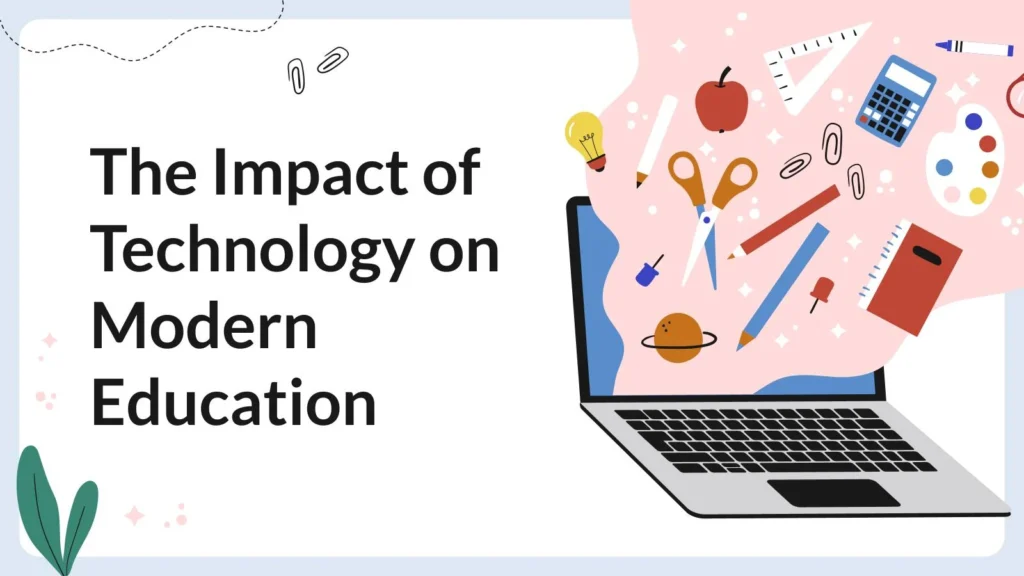Introduction
The impact of technology on education has been one of the most transformative developments of the 21st century. Traditional classrooms that relied on chalkboards, textbooks, and face-to-face lectures have now evolved into digital learning environments filled with interactive tools and global resources. Technology has not only enhanced how students learn but also how teachers teach. From smartboards and online libraries to artificial intelligence and virtual reality, education is more accessible, personalized, and engaging than ever before.
Breaking Geographical Barriers
One of the most notable impacts of technology on education is its ability to break geographical barriers. In the past, access to quality education was limited to physical classrooms. Today, with the help of online learning platforms like Coursera, Udemy, and Khan Academy, students can learn from anywhere in the world. Virtual classrooms and video conferencing tools allow teachers to connect with learners across continents, promoting inclusivity and global collaboration. This shift ensures that even remote learners can receive the same quality of education as those in urban centers.
Personalized and Adaptive Learning
Technology has also introduced personalized learning—a method that allows students to learn at their own pace. Artificial intelligence and machine learning algorithms analyze student progress and adapt lessons to suit individual needs. For instance, adaptive platforms such as Duolingo or Khan Academy adjust difficulty levels based on a student’s performance. This ensures that learners are neither overwhelmed nor under-challenged, resulting in more effective outcomes. Teachers, too, can use data-driven insights to identify areas where students need extra help.
Enhancing Engagement Through Interactive Tools
The impact of technology on education goes beyond accessibility and personalization; it also makes learning engaging. Traditional textbooks have been replaced or supplemented with e-books, videos, animations, and simulations. Virtual reality (VR) and augmented reality (AR) offer immersive learning experiences—for example, medical students can practice surgeries in virtual environments, and history students can virtually “visit” ancient civilizations. Such interactive tools not only boost engagement but also improve retention and understanding of complex concepts.
Collaboration and Communication
Technology has made collaboration easier than ever. Platforms such as Google Classroom, Microsoft Teams, and Zoom allow students and teachers to share resources, conduct group projects, and engage in real-time discussions. Social media and forums also provide spaces for academic exchange. This level of collaboration enhances teamwork, critical thinking, and communication skills, which are essential for real-world success.
Challenges of Technology in Education
While the impact of technology on education is largely positive, it is not without challenges. The digital divide remains a concern—students without reliable internet or devices face disadvantages. Additionally, excessive screen time can affect concentration and health. Teachers may also struggle with adapting to new technologies without proper training. Therefore, balancing traditional teaching methods with digital tools is crucial for a holistic learning experience.
Conclusion
The impact of technology on education is undeniable and continues to shape the future of learning. It has made education more accessible, personalized, engaging, and collaborative. Despite challenges, its benefits outweigh the drawbacks, as technology empowers both teachers and learners. As innovation progresses, the education sector will continue to evolve, preparing students not only with knowledge but also with the skills required to thrive in a digital world.
